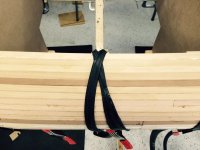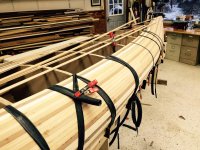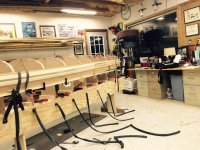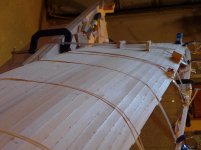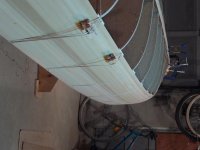I'm getting ready to begin my third build. The previous two builds were stapleless (using different methods), but both boats were "traditional" designs. One was an EM White the other a prospector. Neither on has any tumblehome.
I'm getting ready to build a modern asym solo hull with quite a bit of tumblehome and am worried about securing that area, but I don't like the look of staple holes.
I'm seeking any advise this group of talented builders have for me!
I'm getting ready to build a modern asym solo hull with quite a bit of tumblehome and am worried about securing that area, but I don't like the look of staple holes.
I'm seeking any advise this group of talented builders have for me!

